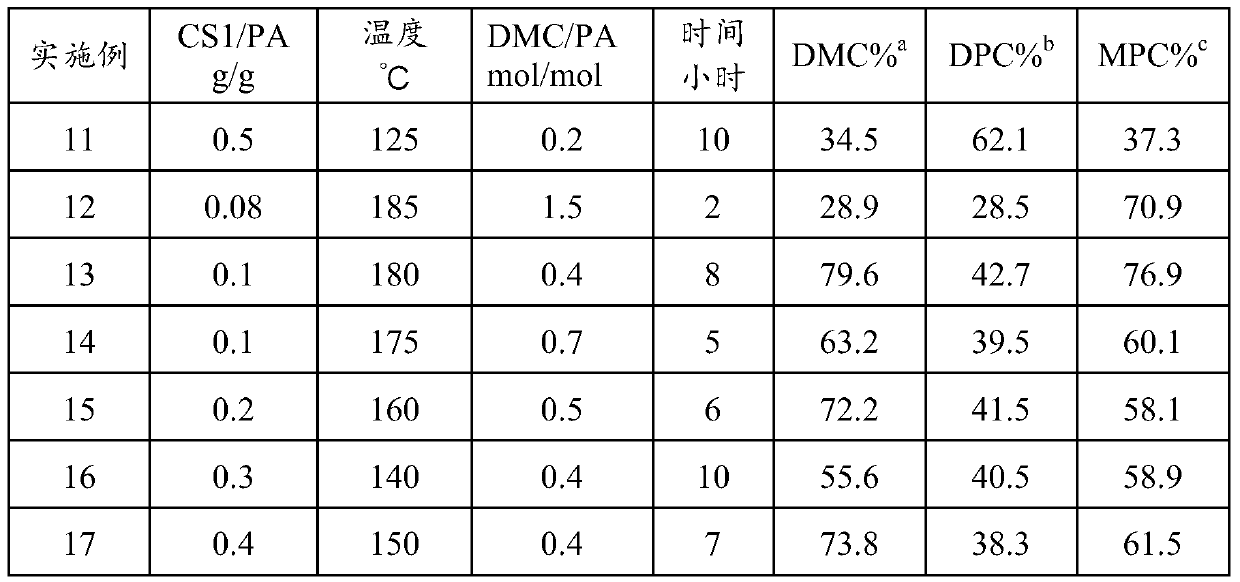Titanium dioxide microspheres@all silicon silica-1 molecular sieve core-shell catalyst, preparation method and application
- Summary
- Abstract
- Description
- Claims
- Application Information
AI Technical Summary
Problems solved by technology
Method used
Image
Examples
Embodiment 1
[0027] Preparation of titanium dioxide microspheres: add 10mL 0.4mmol / L KCl solution to 1000mL absolute ethanol, stir for 10min, then under vigorous stirring, add 42.5g n-butyl titanate dropwise to the above KCl solution, dropwise After the addition is completed, continue to stir for 30 minutes, stand at room temperature for 2 hours, then centrifuge, wash with deionized water 3 times, dry in an oven at 120°C for 12 hours, and calcinate at 400°C to obtain nuclear phase titanium dioxide microspheres C1. The average diameter of the prepared C1 was 800 nm.
[0028] Preparation of titanium dioxide microspheres@全siliconSilica-1 molecular sieve core-shell catalyst: add 7.2g of tetrapropylammonium hydroxide (25wt% aqueous solution) and 1.0g of NaOH into 50mL of deionized water, mix well, add 5.0g of the above-prepared Titanium dioxide microspheres C1, ultrasonically dispersed for 30 minutes, stirred at 80°C for 3 hours, then slowly added 6.62g of ethyl orthosilicate, aged at 25°C for 3 h...
Embodiment 2
[0030] Preparation of titanium dioxide microspheres: add 10 mL of 0.1 mol / L KBr solution to 1000 mL of absolute ethanol, stir for 10 minutes, and then under vigorous stirring, add 42.5 g of n-butyl titanate dropwise to the above KBr solution. After the addition is complete, continue to stir for 30 minutes, stand for 2 hours at room temperature, then centrifuge, wash with deionized water three times, dry in an oven at 120°C for 12 hours, and calcinate at 300°C to obtain nuclear phase titanium dioxide microspheres C2. The average diameter of the prepared C2 was 310 nm.
[0031] Preparation of titanium dioxide microspheres@全siliconSilica-1 molecular sieve core-shell catalyst: tetrapropylammonium bromide is made into a 50mL, 0.2mol / L solution, and ammonia is added to adjust the pH to 13.5. After mixing evenly, add 5.0g of titanium dioxide Microsphere C2, ultrasonically dispersed for 30 minutes, stirred at 80°C for 3 hours, then slowly added 201.3g of tetraethyl orthosilicate, aged at...
Embodiment 3
[0033] Preparation of titanium dioxide microspheres: add 10 mL of 1.0 mol / L KCl solution to 1000 mL of absolute ethanol, stir for 10 minutes, and then under vigorous stirring, add 35.5 g of isopropyl titanate dropwise to the above KCl solution. After the addition is complete, continue to stir for 30 minutes, let stand at room temperature for 2 hours, then centrifuge, wash with deionized water for 3 times, dry in an oven at 120°C for 12 hours, and calcinate at 400°C to obtain nuclear phase titanium dioxide microspheres C3. The average diameter of C3 is 150 nm.
[0034] Preparation of titanium dioxide microsphere@全siliconSilica-1 molecular sieve core-shell catalyst: tetraethylammonium hydroxide was made into a 50mL, 0.2mol / L solution, and ammonia was added to adjust the pH to 13.5. After mixing, add 5.0g of titanium dioxide Microsphere C3, ultrasonically dispersed for 30 minutes, stirred at 80°C for 3 hours, then slowly added 90.3g of methyl orthosilicate, aged at 50°C for 1 hour, ...
PUM
| Property | Measurement | Unit |
|---|---|---|
| diameter | aaaaa | aaaaa |
| diameter | aaaaa | aaaaa |
| thickness | aaaaa | aaaaa |
Abstract
Description
Claims
Application Information
 Login to View More
Login to View More - R&D
- Intellectual Property
- Life Sciences
- Materials
- Tech Scout
- Unparalleled Data Quality
- Higher Quality Content
- 60% Fewer Hallucinations
Browse by: Latest US Patents, China's latest patents, Technical Efficacy Thesaurus, Application Domain, Technology Topic, Popular Technical Reports.
© 2025 PatSnap. All rights reserved.Legal|Privacy policy|Modern Slavery Act Transparency Statement|Sitemap|About US| Contact US: help@patsnap.com


